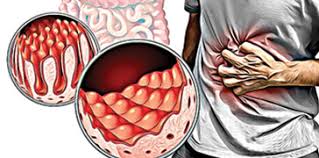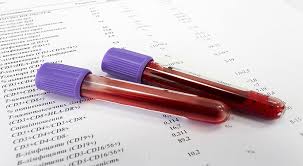Physical Address
304 North Cardinal St.
Dorchester Center, MA 02124
Physical Address
304 North Cardinal St.
Dorchester Center, MA 02124

When most people think of celiac disease, they naturally think of stomach problems like bloating, diarrhea, and belly pain. This long-term autoimmune condition happens when the body’s immune system reacts badly to gluten — a protein found in wheat, barley, and rye. This reaction damages the small intestine when people with celiac disease eat gluten.
This intestinal damage causes the uncomfortable stomach symptoms we know about, but it also affects a completely different part of the body: the bones. This happens because celiac disease makes it hard for the body to absorb important nutrients, including calcium and vitamin D — two nutrients that are essential for keeping bones healthy. Because of this, people with celiac disease have a higher risk of developing bone problems like weak bones, low bone density, and osteoporosis (brittle bones).
This is why getting diagnosed quickly is so important. Celiac disease affects about 1-2% of people worldwide, and early diagnosis can help prevent these bone problems. It also shows why people with celiac disease need regular bone health checkups.
Many patients with celiac disease don’t have the typical stomach symptoms. Instead, they may show other signs of the disease, including bone loss.
Bone health problems from celiac disease can happen at any age, including in children. Women after menopause are at extra risk because their estrogen levels drop, which makes bones weaker. Older adults with celiac disease are also more at risk because bones naturally get weaker with age, and poor nutrient absorption makes this worse. Studies show that bone problems from celiac disease are especially common in Europe and North America. A study from Denmark found that people with celiac disease have a 37% higher risk of major bone fractures and a 27% higher risk of any fractures.
The way celiac disease hurts bones is complicated and involves several factors:
The intestinal damage makes it hard to absorb vitamin D, which is crucial for helping the body use calcium and phosphate properly and for building strong bones. Vitamin D deficiency is common in untreated celiac disease and leads to bone loss. It can also cause a condition called osteomalacia, where bones become soft. In children with celiac disease, severe vitamin D deficiency can cause rickets.
When the body can’t absorb calcium well, it triggers a response where the parathyroid glands make more parathyroid hormone (PTH). This hormone tries to fix calcium levels by breaking down bone tissue, which ultimately weakens the bone structure. This bone damage can happen even when blood calcium levels look normal.
Celiac disease causes ongoing inflammation in the body. Inflammatory substances like TNF-alpha and certain interleukins are elevated and directly promote the breakdown of bone tissue while interfering with new bone formation.
Women with celiac disease may have irregular periods or early menopause, leading to lower estrogen levels — a hormone that’s critical for keeping bones strong. In men, there may be resistance to testosterone’s bone-building effects. These hormone imbalances can significantly weaken bones.

Because of these risks, it’s important to test for celiac disease quickly when patients have symptoms that suggest this condition, or in some patients with vitamin D deficiency who don’t respond to normal vitamin D treatment, or when low bone density is found for other reasons.
The best first test for people suspected of having celiac disease (who are still eating gluten) is the tissue transglutaminase IgA antibodies (tTG-IgA) test along with a total serum IgA test (to make sure the person can make IgA antibodies properly). If IgA levels are low, a different type of test is needed.
If the blood test is positive, the next step is usually an endoscopic biopsy of the small intestine, which can confirm the diagnosis by showing specific changes like increased immune cells, enlarged crypts, and flattened villi (tiny finger-like projections). However, the biopsy may not be needed if the antibody levels are extremely high (10 or more times the normal upper limit). Sometimes genetic testing is necessary for people suspected of having celiac disease.
It’s crucial that all diagnostic tests are done while the patient is still eating gluten, because antibody levels and biopsy findings improve once someone starts a gluten-free diet.
The European Society for the Study of Celiac Disease recommends that people aged 30-35 or older with newly diagnosed celiac disease get bone density testing using a DXA scan, especially if there are signs of poor nutrient absorption, if the diagnosis was delayed, or if there are other risk factors for weak bones. DXA scans should be repeated every 5 years if the first scan was normal, or every 2-3 years if the first scan showed low bone density or if risk factors continue.
The American College of Gastroenterology also recommends DXA screening for low bone density in celiac disease. Children with celiac disease should also get DXA scans when they have risk factors for low bone density. Calcium, vitamin D, alkaline phosphatase, and PTH levels should be checked at diagnosis and monitored yearly (or more often in children) until they return to normal.
Gluten-Free Diet: The most important treatment for celiac disease is following a strict, lifelong gluten-free diet. Removing gluten from the diet allows the intestinal lining to heal, which improves nutrient absorption and reduces inflammation throughout the body. Many studies have shown that sticking to a gluten-free diet can significantly improve bone density, with noticeable changes often seen within the first year. The American Gastroenterological Association emphasizes how critical the gluten-free diet is for both digestive recovery and preventing complications like osteoporosis.
Supplements: Along with the gluten-free diet, people with celiac disease should take calcium and vitamin D supplements to fix deficiencies and support bone health. Guidelines recommend routine supplementation and monitoring to ensure optimal levels.
Monitoring: Regular bone density tests are recommended to catch early signs of bone loss and monitor how well treatments are working.
Exercise: Physical activity, especially weight-bearing exercises, is encouraged because it helps stimulate new bone formation and makes the skeleton stronger. Patients should be encouraged to do weight-bearing exercises, strength training, limit alcohol, and avoid smoking.
Medications: In severe cases of osteoporosis, bone-strengthening medications like bisphosphonates may be considered. However, there’s limited evidence for their use specifically in celiac disease patients, and such treatments should be customized for each person’s needs.
Bone disease is a common and potentially serious complication of celiac disease, often resulting from a combination of poor nutrient absorption, inflammation, and hormone imbalances. Early detection and comprehensive management — including following a gluten-free diet, taking nutritional supplements, staying physically active, and getting routine bone density screening — are essential for maintaining bone health and preventing long-term complications in people with celiac disease.
TO READ MORE, OPEN THE LINK BELOW:
https://www.medscape.com/viewarticle/bone-metabolism-celiac-disease-2025a1000czz